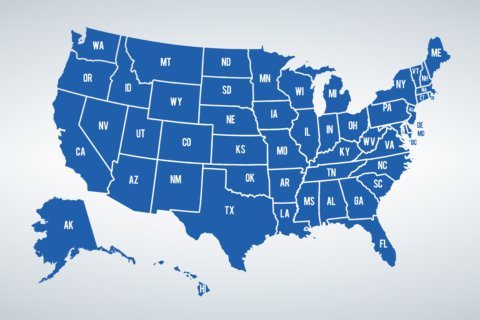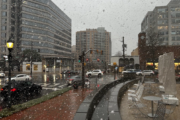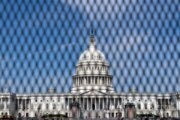Smoke rising from the rubble of multistory buildings in Beirut. Rockets streaking over the blackened hills of northern Israel. People fleeing their homes, not knowing when or if they will return.
Israel and the Lebanese militant group Hezbollah began a ceasefire Wednesday, but even if it holds, the devastation caused by 14 months of fighting will linger for years. Associated Press photographers have documented the harsh toll on both sides.
The border area is a charred wasteland, and an escalation in September brought waves of bombardment upon the Lebanese capital’s southern suburbs and other areas where Hezbollah has a strong presence. Strikes also hit other areas.
Hezbollah’s rocket, drone and missile fire emptied out communities across northern Israel, and longer-range drones and missiles have hit the northern city of Haifa and the outskirts of Tel Aviv.
Israel agreed to the ceasefire after months of negotiations led by the United States and France. Hezbollah has said it accepts the proposal. It took effect early Wednesday with a two-month initial halt in fighting. The deal requires Hezbollah to end its armed presence in a swath of southern Lebanon, while Israeli troops return to their side of the border.
Civilians on both sides will continue to pay the price — in the coming hours, months and years. In Lebanon, Israeli forces have blown up entire villages. In Israel, people returning to their homes in the north for the first time in more than a year may find that they have been heavily damaged. Others may never come back, fearing future attacks.
Hezbollah began firing into northern Israel the day after Hamas’ Oct. 7, 2023, attack out of Gaza ignited the war there. Hezbollah said it was acting in solidarity with the Palestinians and Hamas, a fellow Iran-backed militant group. Israel returned fire, and the two sides have been exchanging barrages ever since.
Israel escalated its campaign in mid-September, launching airstrikes that killed top Hezbollah leader Hassan Nasrallah and most of his deputies. It is widely thought to have been behind an attack earlier that month in which pagers and walkie-talkies belonging to Hezbollah members exploded, killing several people, including civilians, and wounding thousands.
Israeli ground troops invaded at the start of October and have been battling Hezbollah in a belt of towns and villages near the border.
More than 3,760 people have been killed by Israeli fire in Lebanon, many of them civilians, according to Lebanese health officials. The bombardment has driven 1.2 million people from their homes, with many forced to camp out in public parks and beaches. Israel says it has killed more than 2,000 Hezbollah members.
Hezbollah fire has forced some 50,000 Israelis to evacuate in the country’s north. At least 75 people have been killed, more than half of them civilians. More than 50 Israeli soldiers have died in the ground offensive in Lebanon.
___
Follow AP’s war coverage at https://apnews.com/hub/israel-hamas-war
Copyright © 2025 The Associated Press. All rights reserved. This material may not be published, broadcast, written or redistributed.





